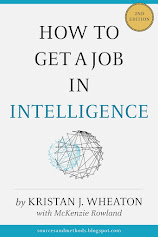The Serious Play Conference is nothing if not intellectually stimulating (almost exhausting). It will take several weeks to synthesize everything I have seen. Here, however, are some of my notes and a few of my first impressions:
The Conference has been moderated by John Hockenberry of NPR. His opening remarks talked about our "inner zealotry" that drives us to be creative even when there is no apparent use for or purpose to it.
The morning presentations were given over to cosmology which may not, at first glance, seem to have much to do with design or serious play. The presenters were Dr's George Smoot and Charles Elachi. Smoot is a Nobel Laureate (if you think it was pretty cool to have basic cosmology explained by a Nobel Laureate, you are right) and Elachi is the director of the Jet Propulsion Laboratory. Apparently, there is a quite a strong connection between JPL and The Art Center. As the morning went on, it became obvious why -- elegant, useful design is critical to JPL's success. They have recognized this and tap into The Art Center for ideas. We got to see a full scale mock up of the Phoenix lander (scheduled to touch down on Mars on 25 May) and they showed us a cool movie about the challenges of the descent and landing (which you will have to go here to see).
One of the things I liked about the conference is the way they would take a break from the speeches (which were all pretty good anyway) and just show something interesting. The video below, an ad for a South African mobile phone service, is a good example of one of these creative interludes:
The afternoon sessions had a number of good presentations but four stood out (I will only talk about two here and save the other two for tomorrow). Stuart Brown, founder of the National Institute of Play, talked about his work studying animals at play and his early work in the importance of play in humans. He made a number of interesting observations. First, he said that the opposite of play is not work; it is depression. He cited several studies where animals that were not allowed to play were much less well adapted to their environment than those who had been allowed to play. He stated that "play signals" (like a dog bending down on its front legs with its tail wagging) are, in some sense, trust cues -- something that tells the other animals that it OK to drop their guard and just play. He showed some amazing photos of a wild polar bear and a chained huskie "agreeing" to play instead of the bear just eating the huskie. My notes may not be quite right but I thought he even said that flirting in humans was essentially a play signal. I had never thought of it quite that way...
He went on to claim that there were all sorts of reasons to believe that play is very important to humans. First, he rejected the notion that play is somehow related to preparing oneself for the future. He said it was more than that. He claimed that 82% of the memories recorded by families in the obituaries about loved ones after 9/11 had some element of play about them. I was reminded all the while of Rebecca West's comment concerning the people of the Balkans in Black Lamb and Grey Falcon; something to the effect that life is about more than just taking the bad things out of it. It is also about putting the good things into it.
I was also very taken with the presentation by Dr. Robert Lang, a physicist turned origami virtuoso. He has figured out the mathematics of origami such that he can, with a large enough single piece of paper (and without cutting), make anything. Really. Anything. His software is called "Treemaker" and is apparently free to download and play with. His work reminded me of Gerd Gingerenzer's book Gut Feelings and Mike Lyden's thesis research into Accelerated Analysis in that they are all looking for fast and frugal methods that explain the most amount of info with the least amount of work. While Lang has used his work in origami to help JPL figure out how to fold up its antennae and solar panels on their spacecraft, his discussion of crease patterns made me think that there might be something there, either metaphorically or mathematically, to help understand patterns of significance to intelligence analysts.
Thursday, May 8, 2008
Cosmology, Psychology And The Mathematics Of Crease Patterns ... And That Was Just Day One (Serious Play)
Posted by
Kristan J. Wheaton
at
11:20 PM
![]()
Labels: intelligence analysis, Serious Play, video
Subscribe to:
Post Comments (Atom)






1 comment:
This is a great post Kristan. Very interesting. Have you ever read 'The Play Ethic' by Pat Kane? It discusses similar ideas. Kane has a blog here: http://theplayethic.typepad.com/
Post a Comment